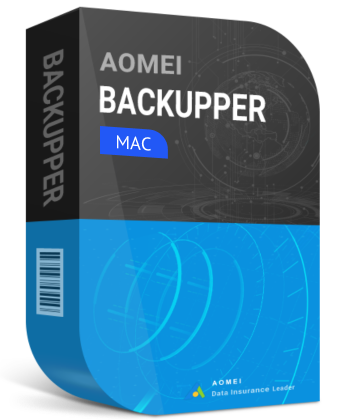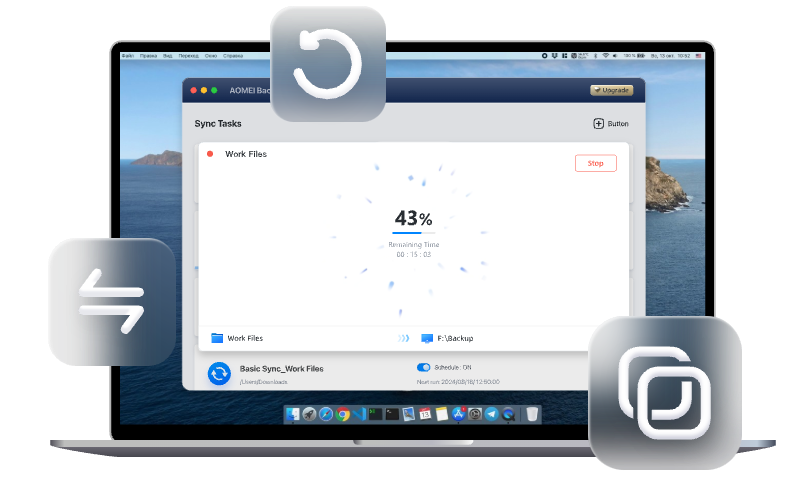Mac Can't Move Files to External Hard Drive: 6 Quick Fixes
This article will show you how to resolve Mac can't move files to external hard drive, and introduce a simple and free method to transfer Mac files to external drive with no error.
User Case: Unable to Copy Files to External Drive
I have some photos on my desktop, but I am unable to copy them to my external drive. How do I fix it? Thanks in advance.
Transferring files from Mac to external hard drive should be a seamless experience, but if you find that your Mac can't move files to an external hard drive, don't worry. This guide will walk you through common reasons and provide 6 effective solutions to help you resolve the problem.
Why Can't I Transfer Files from My Mac to an External Hard Drive?
When you encounter the issue of Macbook can't move files to external hard drive, it can be due to several factors:
❗ File system compatibility: External drives formatted with NTFS are read-only on macOS by default, preventing you from moving files.
❗ Insufficient disk space: If your external drive doesn't have enough free space, you won't be able to move files to it.
❗ Permission issues: Your Mac or the external hard drive might have permission settings that prevent file transfers.
❗ Connection problems: A faulty cable or port can cause connection issues, preventing correct file transfers.
❗ Drive errors: Corruption or errors on the external drive can hinder file operations.
How to Fix Mac Can't Move Files to External Hard Drive in 6 Ways
Now, let's dive into the six quick fixes for resolving the issue of can't copying files from Mac to external hard drive.
Solution 1. Check Your Disk Connection
Sometimes, the issue is as simple as a poor connection. Ensure your external hard drive is properly connected to your Mac. Here's how to check:
- Reconnect the external drive: Unplug the external hard drive and plug it back in securely. Or, try using a different USB port on your Mac.
- Use a different cable: If you are using a cable for an external drive connection, the USB cable might be faulty. Please try using a different cable to connect your drive.
Solution 2. Reformat the External Hard Drive
If your external hard drive is formatted with NTFS, that’s why the reason for Mac cannot move files to external hard drive. This is because NTFS, which is read-only in macOS by default, is the file system used for Windows. In such a case, you could follow the steps to check the file system of your external hard drive and reformat it:
1. First access Finder > Applications > Utilities > Disk Utility in turn, select the external drive from the left and check its file system on the right panel.
2. To reformat the external disk to a Mac-compatible file system, such as APFS, HFS+, FAT32, or exFAT, click on the Erase button on Disk Utility. Then, confirm your operation by clicking Erase.
Solution 3. Check Your Disk Storage Space
Insufficient storage space on the external hard drive can prevent file transfers. Verify that there is enough space available on the drive.
1. Navigate to your external hard drive in Finder.
2. Right-click on the drive and select Get Info to view the available space. If the drive is full, delete unnecessary files to free up space.
Solution 4. Check Permissions of Your External Drive
Incorrect permissions settings on your Mac or the external hard drive might result in the problem of can't copy files to external hard drive on Mac.
1. Locate your external hard drive in Finder. Right-click on the drive and select Get Info.
2. Expand the Sharing & Permissions section. Ensure that your user account has Read & Write permissions. If not, click the lock icon to make changes and adjust the permissions settings.
Solution 5. Run First Aid to Repair Disk
You could also run First Aid in Disk Utility to fix disk errors that might cause Mac can't transfer files to external hard drive.
1. Go to Applications > Utilities > Disk Utility. Then, click on your external hard drive in the sidebar.
2. Click on First Aid and Run to wait for the repair process to complete.
Solution 6. Restart/Update Your Mac
Sometimes, a simple restart can resolve issues related to Mac not copying files to external hard drive. Additionally, keeping your macOS updated ensures that you have the latest fixes and improvements.
- To restart Your Mac: Click the Apple menu and select Restart.
- To check for Updates on Mac: Go to System Preferences > Software Update. Then, follow the on-screen guide to install any available updates.
Move Files from Mac to External Hard Drive - Error-free & Quick
For a seamless and error-free file transfer from Mac to external drive, you could consider using a professional and free file sync software for Mac - AOMEI Backupper Mac. This powerful software not only simplifies the process but also offers advanced features to enhance your file management.

- User-friendly interface - Simple and intuitive, making it easy for users of all levels.
- Comprehensive sync options - Provide Basic Sync, Mirror Sync, and Two-Way Sync to sync files and folders from source to destination flexibly.
- Scheduled sync - Support auto synchronizing folders and files at a fixed time, freeing you from manual operations.
- High-speed & secure transfer - Has no limitations on file transfer types or sizes, and utilizes encryption to safeguard your data.
- Versatile compatibility - Apart from external disk, it also allows you to sync Mac files to NAS devices, network drive, as well as sync data across two Macs, etc.
Here is a step-by-step guide on how to use AOMEI Backupper Mac for transferring Mac files to your external hard drive:
1. Plug in your external hard drive and ensure it's recognized by your Mac. Install and run the AOMEI Backupper Mac software.
2. Click on the New Task button in the top right corner.
3. Select a synchronization method per your need: Basic Sync, Mirror Sync, or Two-Way Sync.
4. Click on Select Sync Source > Local Path to choose your Mac Files or folders. Then, specify your connected external disk as the sync destination. Then, click Sync to fix Mac won't allow you to transfer files to external hard drive easily.
Summary
Whether you are facing Mac can't move files to external hard drive due to disk format incompatibility, permissions settings, or drive errors, the solutions provided in this guide can help you resolve them quickly. By following these steps, you can ensure a smooth and efficient file transfer from Mac to USB drive and other external disks.
For an error-free and quick file transfer, it is highly suggested to use AOMEI Backupper Mac. This software allows you to regularly transfer files to an external drive to ensure your data is always safe, and you can use it to transfer Mac files to network drives and other locations.

